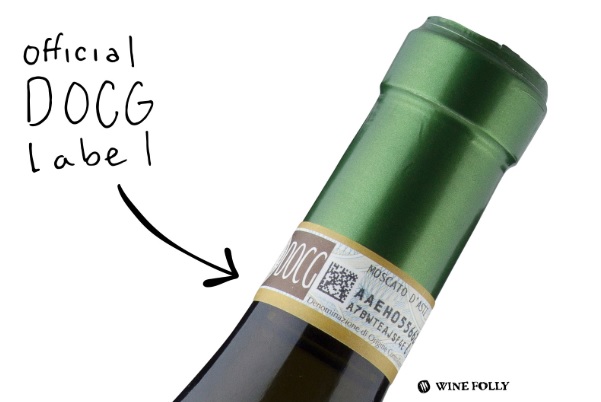 So, my blog post this exact time last week was about a wine holiday, therefore it should come as no surprise that I’m back with “another one {*said in DJ Khaled voice}:” May 9th is “National Moscato Day!”
So, my blog post this exact time last week was about a wine holiday, therefore it should come as no surprise that I’m back with “another one {*said in DJ Khaled voice}:” May 9th is “National Moscato Day!”
Moscato is a wine that most folks seem to either love or hate without much leeway in between. Believe it or not, the interesting thing is that at the root of both the “love” and “hate” emotions is the same underlying factor: sweetness.
On that note, I’d like to make a disclaimer: *clears throat* “Contrary to popular belief, I do not, I repeat, I DO NOT *hate* all sweet wines!”
It seems to be a common assumption that almost anyone who is involved in the wine industry in some way hates sweet wines, and it’s actually just not true {save for a few wine snobs who automatically think every sweet wine is beneath them *insert eye roll*}. If you don’t believe that’s true, try this little experiment: ask your favorite wine pro if they’d like for you to give them a bottle of Tokaji Aszú, Sauternes, Eiswein, or Vintage Port. When you see how FAST most of them will accept, then you’ll know that sweet wine rumor just ain’t true!
That said, let’s get the breakdown of the heart of the matter with the reasons why people love Moscato:
- It’s (typically) fruity and sweet on the palate, which makes it easily approachable in flavor, especially for those who are new to adventures in wine tasting {FACT: almost everyone begin their wine journeys drinking wines with some sweetness}
- M0st Moscatos ring in around the $8-12 price point, which makes the a really affordable option
- It’s ABV (Alcohol by volume) is low (typically around 5-6%) making it quaffable and easy to drink
By now some of you may be saying “Well if there’s so much to love about Moscato, why do people hate it, then? It seems “big box style” wine companies in the wine industry are largely at fault the reason, making for some rational reasoning behind the hate:
- Many contemporary Moscatos made by big box wine companies who use a TON of sugar in the blend to actually mask the fact that they use grapes that are of inferior quality
- There is little thought actually put into creating the craft of making the wine–a wine with character and complexity. The main concern is getting something basic to the market quickly in order to turn as quick a profit as possible because they don’t think the palates of the masses are not worth making high quality wine for
Well, no matter what side of the love-hate coin you’re on, I’m gonna shake up your current perceptions on Moscato: if you love Moscato, chances are you should be drinking better Moscato. If you hate Moscato, chances are you should be drinking a different Moscato!
So, are you ready to level-up your Moscato game? Here are 5 ways to do it–plus a few recommendation to get you started:
1.) Look for DOCG on the wine label
DOCG stands for “Denominazione di Origine Controllata e Garantita {Try saying that 3 times fast. Hey, try just saying it once}, and this designation makes all the difference. the DOCH designation indicates that the people who produced the wine followed strict regulations enabling the wine to be guaranteed {i.e. “Garantita”} in terms of quality and authentic geographic origin.
In short, the DOCG status is essentially the highest Italian wine classification that is reserved only for the country’s highest quality, most expressive wines.
2.) Look for a wine style called “Moscato d’Asti”
Produced in the northwest part of Italy in a province called “Asti,” this was traditionally a wine that Italian winemakers made for themselves {and you know they aren’t going to make bad wine they plan to drink themselves!} to drink with dinner. Made from the Moscato Bianco grape, this lightly effervescent wine is known for its low-percentage levels of alcohol and its well balanced sweetness.
Ceretto Santo Stefano Moscato d’Asti ($24.00)
 WINEMAKER’S NOTES: White and sweet, it is the par excellence dessert wine. It is pale yellow in color, the intensity of which varies according to the year, intensely fruity, aromatic and lingering. The sweetness is in balance with the low alcohol (5%) and acidity, never too high, but that gives the product a pleasant freshness.
WINEMAKER’S NOTES: White and sweet, it is the par excellence dessert wine. It is pale yellow in color, the intensity of which varies according to the year, intensely fruity, aromatic and lingering. The sweetness is in balance with the low alcohol (5%) and acidity, never too high, but that gives the product a pleasant freshness.
3.) Venture away from the mass-produced wines and explore smaller producers to get a better quality of wine
Smaller producers and wineries often put more care and passion into their wines because their very reputation is on the line. A good reputation = a sustainable, growing business–and vice versa–so it’s particularly important to them to try to make something amazing for you to drink!
Bera Moscato d’Asti ($22.00)
 This is an AMAZING wine, y’all. I actually did a review for this small produced wine back in 2015 (OG wine blogger/writer on deck!!) here on the blog called Bera Moscato d’Asti that I absolutely looooooved. Click here to get my review!
This is an AMAZING wine, y’all. I actually did a review for this small produced wine back in 2015 (OG wine blogger/writer on deck!!) here on the blog called Bera Moscato d’Asti that I absolutely looooooved. Click here to get my review!
HISTORY OF THE WINERY: “Valter Bera represents the very best of small-scale Asti and Moscato d’Asti production in Piedmont. The family has grown grapes in the village of Neviglie for over a century, growing and selling grapes to other firms for many years. Valter joined the winery in 1979 after graduating from the Enological School of Alba and began bottling Moscato, Brachetto, Barbera, and Nebbiolo under the Bera name. Valter soon earned a reputation for the quality of his wines, especially for his exceptional Moscato, and has continued to refine his work with the help of his two sons, Umberto and Riccardo.”
4.) Don’t love the sweet style? Look for dry styles
Had no clue there are dry (not sweet) Moscatos? Heidi Barrett of La Sirena wines knows the feeling, saying: “The challenge has been opening people’s eyes to the fact that Moscato can exist outside of the category of ‘sweet wines’.” Wondering what this beauty tastes like? See the winemaker’s note below!
La Sirena Moscato Azul ($30)
WINEMAKER’S NOTES: The 2016 is a brilliant pale straw color with vibrant aromas of honeydew melon, tropical fruit, green apple, and jasmine floral notes. This is a very pure expression of Muscat Canelli. Crisp and full across the palate with flavors of tangy green apple, pear, lychee fruit, and white peach. It has a nice lingering finish, great acidity, and a lovely polished profile, quite seamless for a white wine. The 2016 marks our 14th release of Moscato Azul, our proprietary white wine recognizable by its unique style and consistency each year. Reminiscent of dry Riesling with a bit of minerality and lime peel in the finish when served very chilled. It has tons of flavor without weightiness, enticingly fresh and immediately lovable, crisp and dry in the finish. Fun and absolutely delicious!
SUGGESTED PAIRINGS: oysters, sushi, Thai food, raw or seared scallops, Vietnamese food, shrimp tacos, tropical (mango/pineapple) salsa, roasted asparagus, triple cream cheese, or sipping on its own
There you have it, ladies and gents–a Moscato primer to help you level-up your wine game! If you’re a Moscato lover, hopefully I’ve convinced you to do some wine exploration and try a Moscato that’s new to you. If you were a Moscato hater {yes, I said “were!”} then you’ve got some more tasting to do to find that special Moscato that’s just right for you. Happy wine sipping, y’all!








